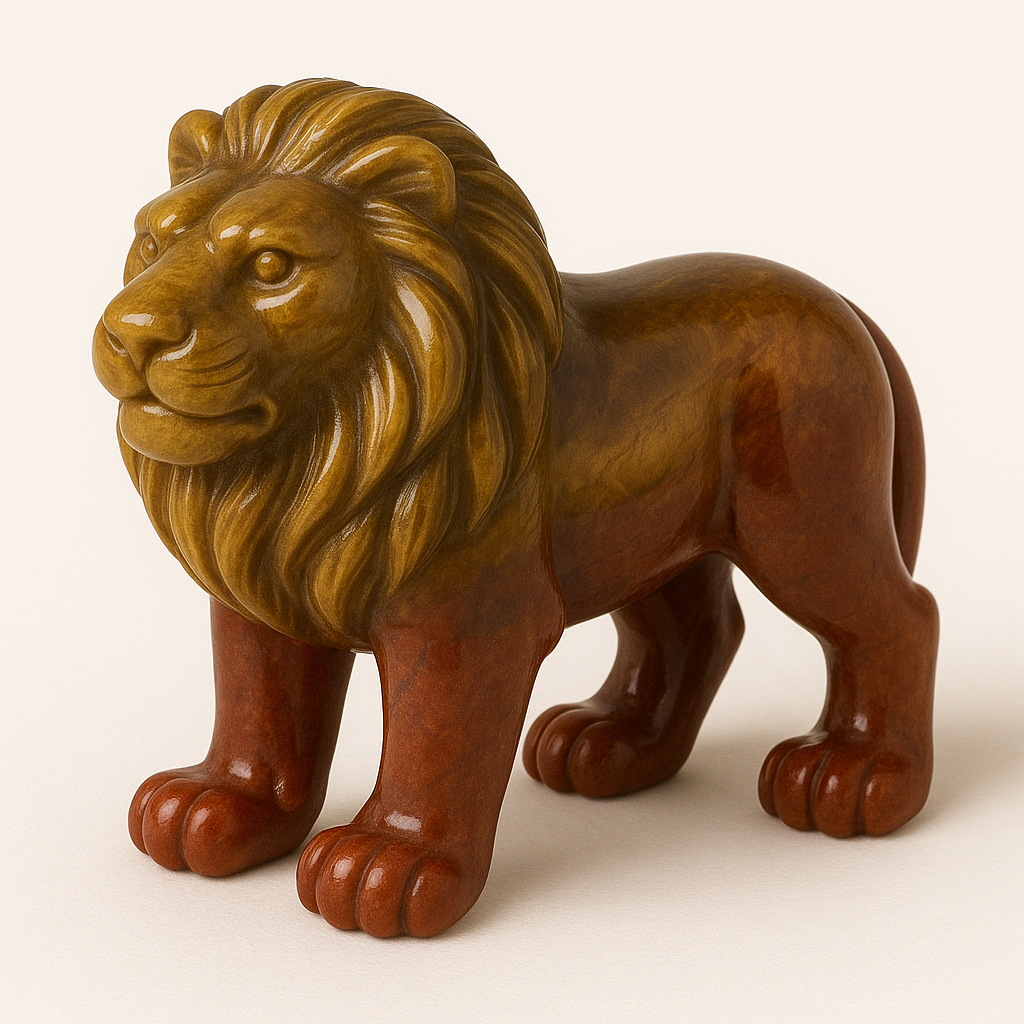
The Symbolism of Lions
Share
With mane like flame and gaze like gold, the lion stands not only as a creature of strength, but as an archetype of sovereign presence, natural leadership, and courage balanced by inner stillness. It does not strive for dominance—it simply is. Its power is known without display, its territory marked not with chaos, but with silent certainty. The lion moves only when movement is required, and in this restraint, it reveals true mastery of will.
To contemplate the lion is to face the energy of the king archetype—not as ruler through control, but as one whose inner balance radiates order outward.
The Solar Guardian in Cultural Memory
In many traditions, the lion is not simply a beast—it is a symbol of cosmic authority, nobility, and divine protection.
In ancient Egypt, the lion-headed goddess Sekhmet was a force of cleansing fire, destroying imbalance and restoring harmony through fierce compassion. Her rage was not distortion—it was cosmic correction.
In Hindu tradition, the lion is the mount of Durga, the goddess of spiritual strength. In the Narasimha avatar, Vishnu takes the form of a man-lion to restore dharma, reflecting the lion’s role as a restorer of divine balance when worldly systems collapse.
In medieval and astrological symbolism, the lion corresponds to the sign of Leo, ruled by the sun. Here, the lion becomes a being of radiance, creativity, and centrality—expressing selfhood in its most complete and undistorted form.
In every mythic mirror, the lion is not the conqueror—it is the center around which others align.
Power, Rest, and the Balance of Action
Lions are powerful, yet spend much of their lives in stillness. They do not hunt constantly. They observe. They wait. Their energy is not scattered—it is focused and conserved, released only when the moment calls for it.
Their role within the pride is not merely as predator, but as protector—of territory, of kin, of energetic structure. The lion does not roam without reason; it acts from grounded purpose, not compulsion.
The lion’s roar is not just sound—it is declaration. It announces presence, establishes boundary, and reinforces identity—not through violence, but through resonance. In this, the lion teaches that power is not about control—it is about clarity of being.
Resonance with the Energy Centers
The lion resonates primarily with the yellow-ray energy center—the solar plexus chakra, which governs personal will, identity, self-awareness within the group, and rightful use of social power.
Its presence is an exalted form of yellow-ray energy—undistorted by insecurity or need for domination. The lion expresses leadership through being, not assertion. It knows what it is, and allows others to orient around that knowing. It is a beacon of energetic centrality—balanced, warm, and stable.
There is also a secondary resonance with the red-ray energy center—the root chakra, the seat of instinct, survival, and primal life-force. The lion’s body is grounded, strong, and attuned to its natural environment. It lives close to the Earth, responding not with fear, but with fully integrated instinctual intelligence.
In the lion, red and yellow coalesce into a form that is rooted in vitality and crowned with purpose.
The Crown That Does Not Waver
To walk with the lion is to learn the path of dignified strength, of power that does not shout, and of action that arises only when the inner sun says “now.” It teaches the seeker to hold space—not through demand, but through presence, to rest when rest is needed, and to act when the moment is aligned.
It does not chase authority.
It embodies it.
It does not consume for the sake of power.
It uses power in service of balance.
The lion shows that true strength is not in striking first,
but in knowing when there is no need to strike at all.